NO, dogs cannot safely eat chocolate. It contains theobromine and caffeine, which are toxic to dogs. If your dog has eaten chocolate, contact your veterinarian immediately.
Why is chocolate dangerous for dogs?
Theobromine and caffeine belong to a class of compounds called methylxanthines, and they work together to create a dangerous combination for dogs. While theobromine is the primary concern, caffeine amplifies its toxic effects. Dogs process both substances much more slowly than humans, allowing them to build up toxic levels in their systems.
The combination of caffeine and theobromine in chocolate is especially problematic because both compounds affect the dog’s body in similar ways — they stimulate the central nervous system and heart, increase urine production, and relax smooth muscles. When present together, these effects are additive, meaning they enhance each other’s impact.
For example, while the caffeine content in chocolate is lower than theobromine, it contributes to increased heart rate and anxiety in dogs who have consumed chocolate. This is one reason why dark chocolate and baking chocolate are especially dangerous — they contain more theobromine and have a higher caffeine content than milk chocolate.
Types of Chocolate and Their Risks
The danger of chocolate to dogs varies significantly depending on the type consumed. Baking chocolate poses the highest risk, containing between 130–450 mg of theobromine per ounce, making it the most dangerous form of chocolate for dogs.
Dark chocolate follows closely behind, with 100–200 mg of theobromine per ounce, presenting a serious threat to dogs of any size.
Milk chocolate, while less concentrated, still contains enough theobromine (44–58 mg per ounce) to cause significant problems.
Even white chocolate, which has the lowest theobromine content, isn’t safe for dogs. Its high-fat content can lead to pancreatitis, a serious condition requiring veterinary care.
Symptoms of Chocolate Poisoning
The effects of chocolate poisoning typically appear within 2-12 hours after consumption. Initially, dogs may show signs of digestive distress through vomiting and diarrhea, accompanied by increased thirst and urination. Dogs often become restless and may breathe more rapidly than usual. As the condition progresses, more severe symptoms can develop, including irregular heart rhythm, muscle tremors, and seizures. In the most serious cases, chocolate poisoning can lead to heart failure.
What to Do if Your Dog Eats Chocolate
Time is crucial if your dog consumes chocolate. First, try to determine the type and amount of chocolate eaten and note when the consumption occurred. Keep any packaging or remains, as this information will help your veterinarian assess the situation’s severity.
Contact your veterinarian immediately, whether during regular business hours or after hours through an emergency clinic. Your vet will need to know the details about the type and amount of chocolate consumed to determine the appropriate course of action. Follow their instructions exactly, as treatment needs vary based on the circumstances.
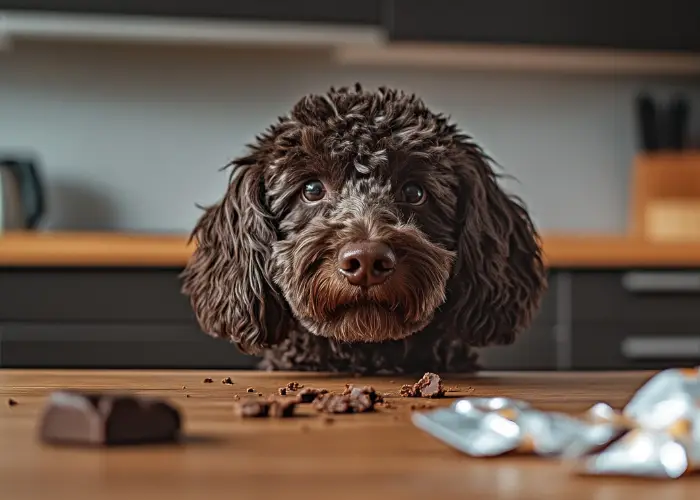
Prevention is Key
The best way to protect your dog from chocolate poisoning is through careful prevention. Store all chocolate products in closed cabinets or high shelves where dogs cannot reach them. Take extra precautions during holidays when chocolate is more prevalent in the home. Be mindful during activities like baking or unpacking groceries, as these everyday situations can create opportunities for accidental chocolate consumption.
Be especially mindful during these seasonal high-risk periods:
Winter Holidays: The rise of advent calendars, chocolate oranges, and premium gift boxes creates multiple risk points. Store these items in closed cabinets, not under the tree.
Valentine’s Day: Premium chocolate sales have doubled in the past decade. Those artisanal truffles are more dangerous than traditional candy hearts.
Easter: While chocolate bunnies are obvious risks, watch for treats like chocolate-filled plastic eggs hidden at dog height.
Halloween: Fun-size chocolate bars are easy for dogs to steal and eat in quantity, wrapper and all.
There is simply no safe amount of chocolate for dogs. While some dogs might appear fine after eating chocolate, the risk of serious illness or death makes it entirely unsuitable as a treat. Keep all chocolate products away from your pets and stick to treats specifically made for dogs. When in doubt about any aspect of your pet’s health or diet, always consult your veterinarian for guidance specific to your dog’s needs.
Does your dog provide emotional support?
Connect with a licensed therapist and get a legit ESA letter for your state in 3 easy steps.
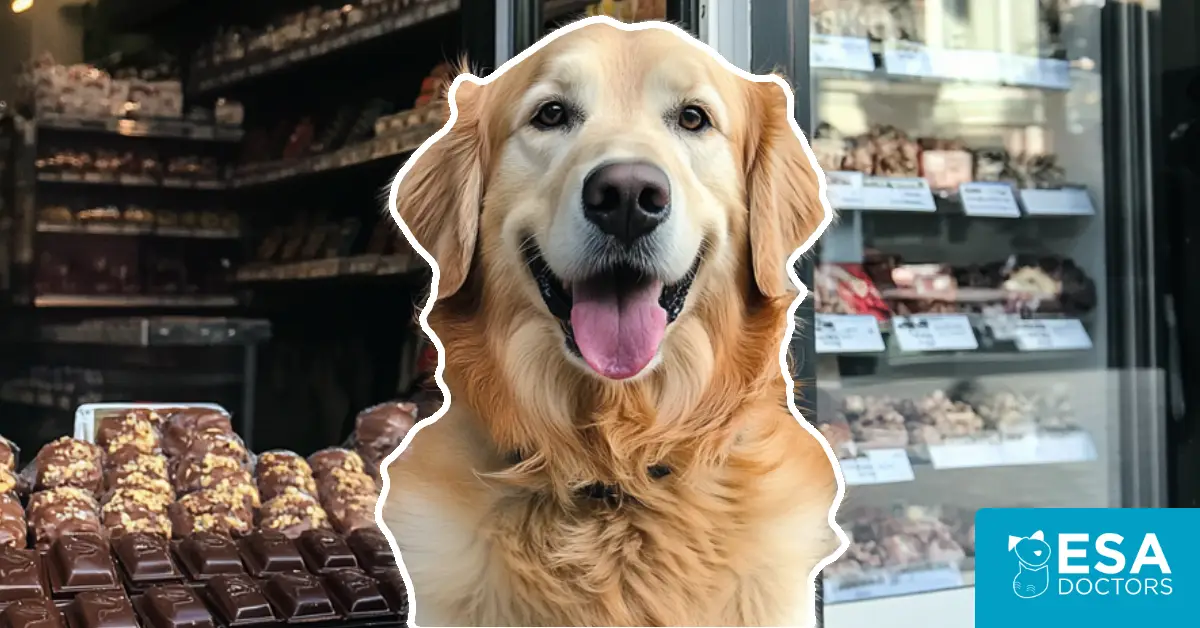

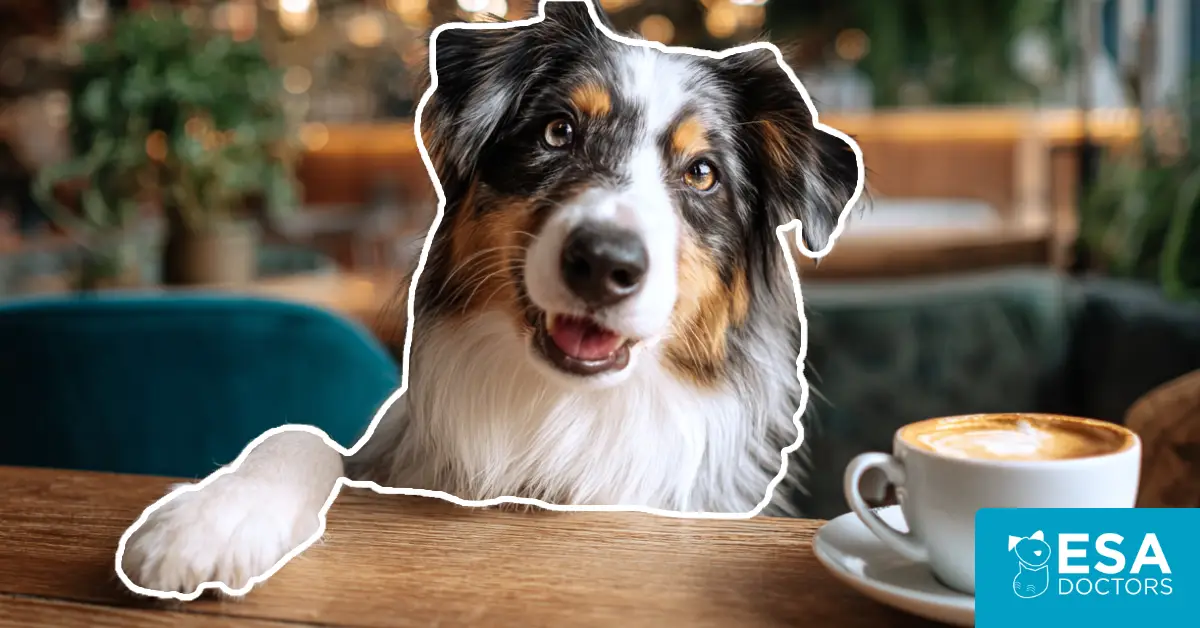
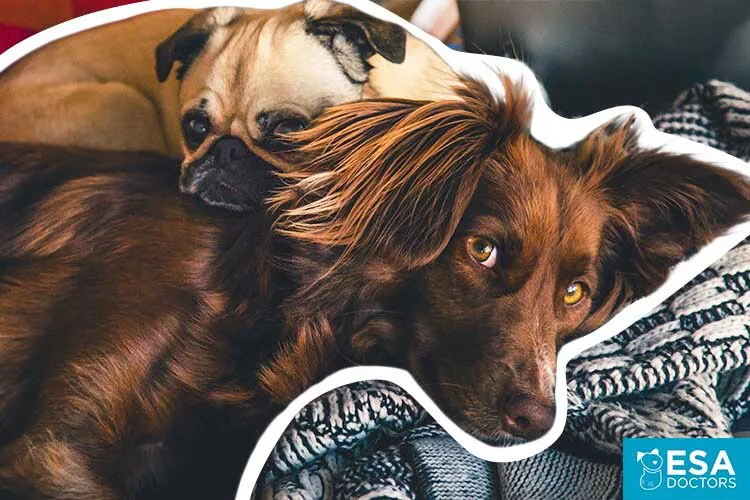
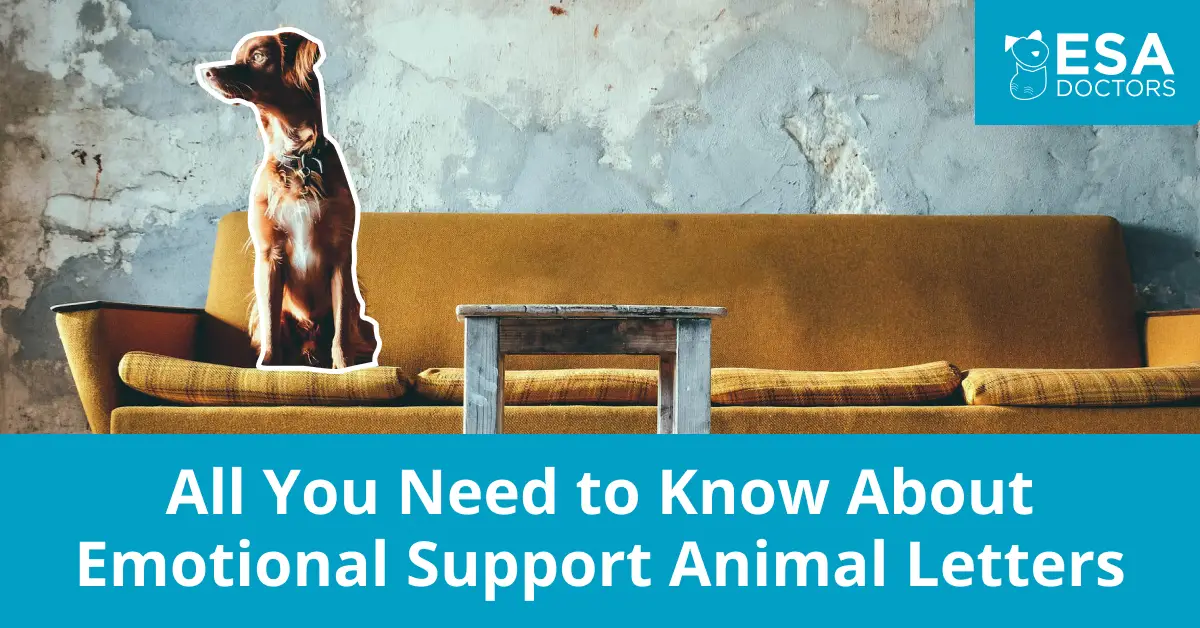
Leave a Comment